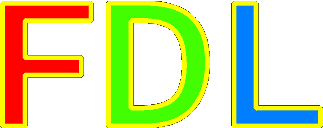
A human-readable data format for storing general purpose information
Schemata
Although in the general case, expressing schemata for data
documents requires a Turing complete scripting language,
many the format of many documents can be expressed fairly
simply.
To help with embedded applications, to save people learning
multiple languages unnecessarily, and to reduce the number
of parseres needed, a schema language for FDL which itself
constists of FDL documents is appropriate.
FDS: a schema language in FDL for FDL
Here we present a schema language in FDL, intended to describe FDL documents.
We will start with an example:
|
Here is a simple FDL document:
@fdl version="1.0" schema="http://fdl.org.uk/fds/people.fds"
person={
name="Alfred Masters"
age=22
sex=male
parent="Jack Masters"
parent="Jill Masters"
}
person={
name="Beth Masters"
age=18
sex=female
parent="Jack Masters"
parent="Jill Masters"
}
person={
name="Jack Masters"
age=46
sex=male
parent="unknown"
parent="unknown"
}
person={
name="Jill Masters"
age=45
sex=female
parent="unknown"
parent="unknown"
}
|
people.fdl
|
|
...and here's the associated schema:
@fdl version="1.0" schema="http://fdl.org.uk/fds/fds.fds"
element:root:{
contains=(labelled person)
}
element:person:{
element:age:{
type=integer
ensure=(value ">" -1)
}
element:sex:{
type=identifier
ensure=(value in (male female))
}
type=list
contains=(1 labelled element:name:(type=string))
contains=(1 labelled sex)
contains=(1 labelled age)
contains=(2 labelled element:parent:(type=string))
contains=(labelled element:offspring:(type=string))
contains=(labelled element:friend:(type=string))
}
|
people.fds
|
As well as being placed in FDS files, all these directives
can also be placed directly in FDL files - as annotations.
More details about FDS will follow shortly.
Tim Tyler |
Contact
|

 undamental
undamental  ata
ata  anguage
anguage